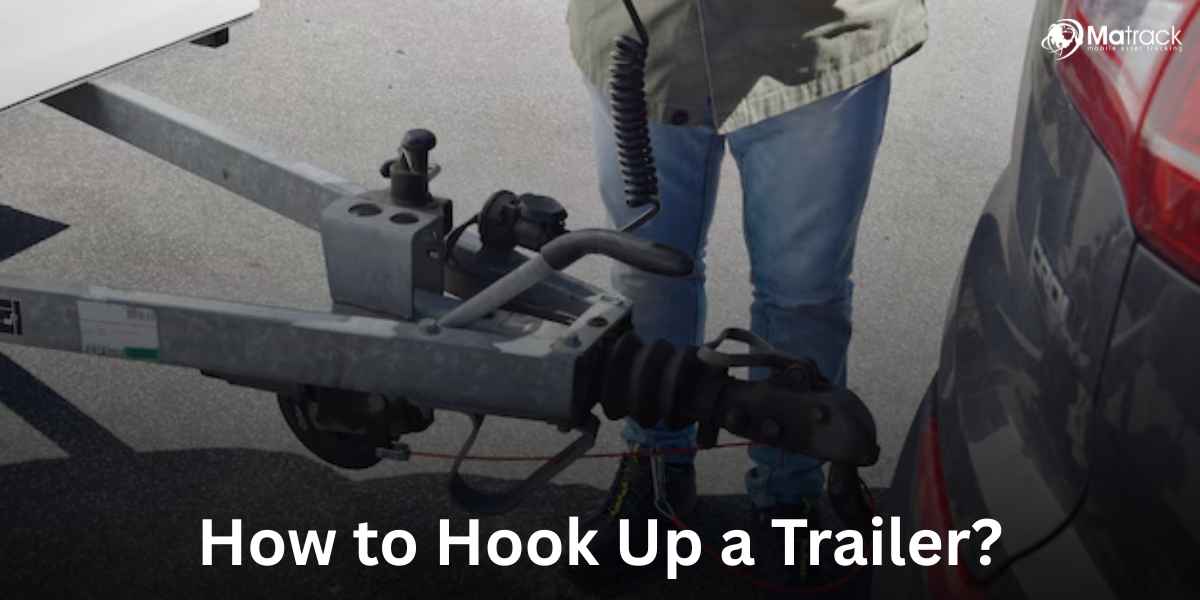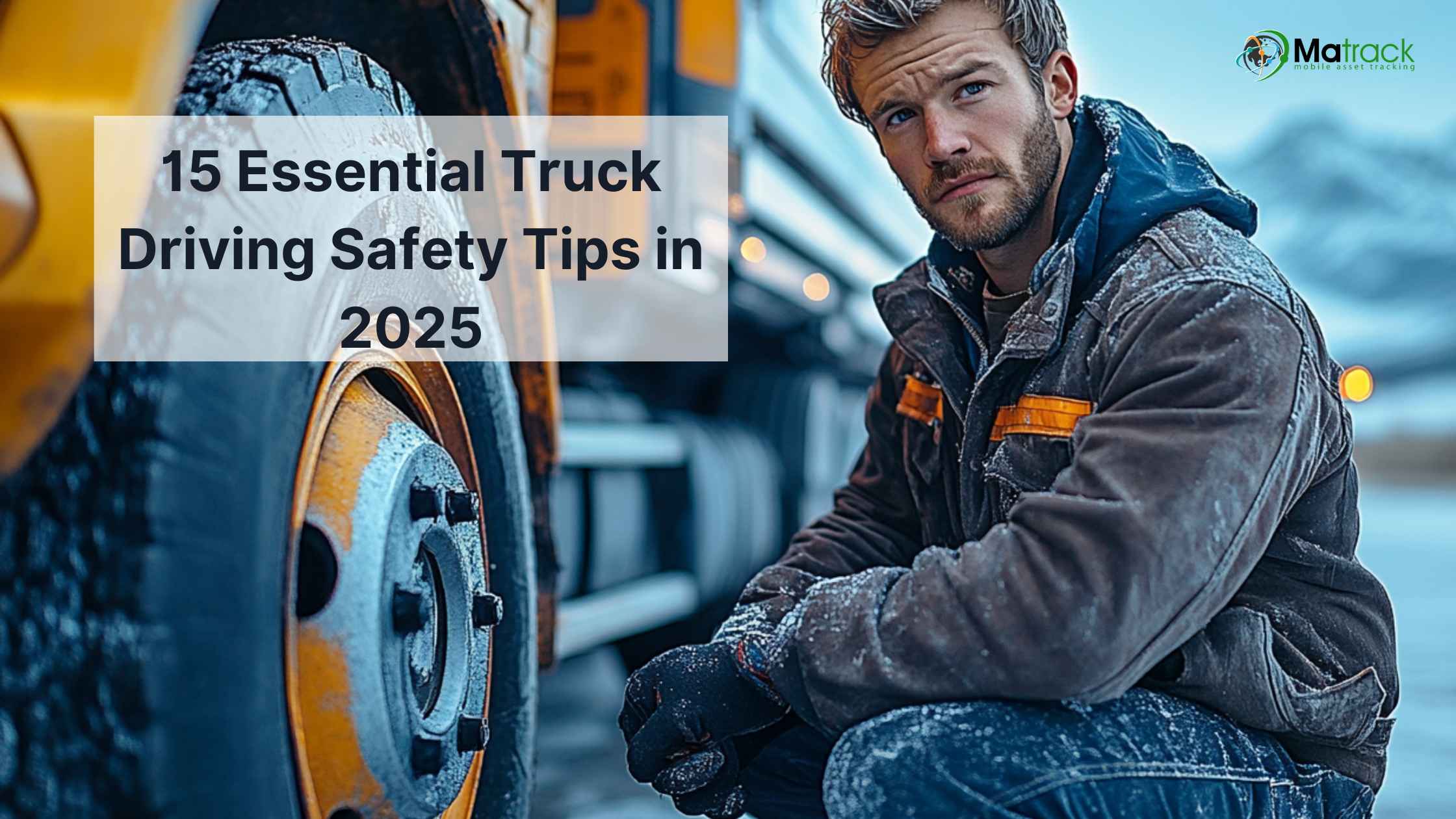Key Takeaways:
- A safe trailer hook-up begins with a thorough inspection of the hitch receiver, coupler, safety chains, wiring, and tires to prevent equipment failure.
- Accurate alignment and secure connections, including crossed chains, help prevent trailer detachment and reduce accident risk while towing.
- Setting the brake controller correctly and completing final safety checks ensures smooth braking and stable handling on the road.
- Adding a GPS tracker like Matrack provides real-time location updates and theft alerts, giving an extra layer of trailer security.
8 Steps How You Can Safely Hook Up a Trailer
1. Inspect Tow Vehicle and Trailer
Inspect all parts carefully to ensure a secure connection:
- Hitch receiver must be clean, with no cracks, rust, or damage
- Hitch ball size must match trailer coupler exactly to prevent detachment
- Trailer coupler must show no dents, cracks, or bent parts
- Safety chains must be free of broken or weak links
- Wiring harness must have intact insulation, with no exposed wires
- Tires must have correct pressure and no visible damage
2. Align Tow Vehicle and Trailer
Position the vehicle so the hitch ball sits directly beneath the coupler:
- Back up slowly, adjusting in small steps
- Use a spotter for precise alignment
3. Lower Coupler onto Hitch Ball
Lower the coupler using the trailer jack until it seats fully on the ball:
- Lock the latch completely so it holds securely
- Lift the tongue slightly with the jack to confirm a firm connection
4. Attach and Cross Safety Chains
Attach chains to the tow frame and cross them under the tongue:
- Crossed chains form a cradle that catches the tongue if separation occurs
- Adjust slack to allow turning while avoiding ground contact
5. Connect Wiring Harness
Plug the trailer wiring into the vehicle socket securely:
- Test brake lights, turn signals, and running lights
6. Set and Test Brake Controller
Adjust brake controller gain for the trailer’s weight:
- Test at low speed to confirm smooth brake engagement
7. Raise Trailer Jack
Retract jack completely so it clears the ground:
- Secure handle to prevent movement during towing
8. Final Walkaround
Check all connections and load security before driving:
- Latch must stay locked
- Chains must remain crossed and secure
- Lights must function
- Load must not shift
What Are The Common Hook-Up Errors and Their Risks?
Unlatched Coupler
An unlatched coupler means the trailer isn’t locked onto the hitch ball. This almost guarantees separation once the vehicle moves, no matter the speed.
Uncrossed Chains
When safety chains aren’t crossed, they can’t support the trailer tongue if the coupler fails. That leaves nothing to stop the tongue from hitting the ground.
Disconnected Wiring Harness
Without a connected wiring harness, brake lights and signals won’t work. Drivers around you won’t see your intentions, raising the chance of a collision.
Incorrect Brake Controller Setting
If the brake controller isn’t set for the trailer’s weight, stopping distance increases. This makes sudden stops dangerous because the trailer pushes the tow vehicle.
Lowered Jack
Leaving the trailer jack down means it will hit the ground once you drive off. That damages the jack and can throw off vehicle control.
Important Equipment for Hooking Up a Trailer
Six key components create a secure, legal, and reliable trailer connection. Each one matters for safe towing.
Hitch Receiver
The hitch receiver attaches to the frame of the tow vehicle. It anchors the entire trailer connection and must handle the full towing load.
Hitch Ball
This ball-shaped part fits inside the trailer coupler. It lets the trailer pivot smoothly while staying connected during turns and uneven roads.
Trailer Coupler
The coupler locks onto the hitch ball and keeps the trailer secured to the tow vehicle. A properly latched coupler stops the trailer from coming loose.
Safety Chains
Chains connect the trailer tongue to the vehicle frame. If the main connection fails, crossed chains stop the tongue from hitting the ground.
Wiring Harness
This harness powers the trailer’s brake lights, signals, and running lights. Without it, drivers behind you won’t see when you stop or turn.
Brake Controller
The brake controller syncs trailer brakes with the vehicle’s brakes. It makes sure the trailer slows down evenly and safely when you brake.
How to Keep Your Trailer Safe With Matrack?
Matrack trailer tracker helps secure trailers by providing accurate real-time location data and immediate theft alerts. Even if GPS signals are blocked, its triangulation feature ensures the trailer’s position is tracked.
The system keeps owners informed through both scheduled updates and movement-triggered notifications. Geofence alerts give clear warnings whenever a trailer crosses a set boundary, adding another layer of protection.
Installation is quick and flexible thanks to the magnetic mount or hardwire options that suit different setups. With 4G LTE connectivity and long battery life, the tracker delivers reliable service over many years.



